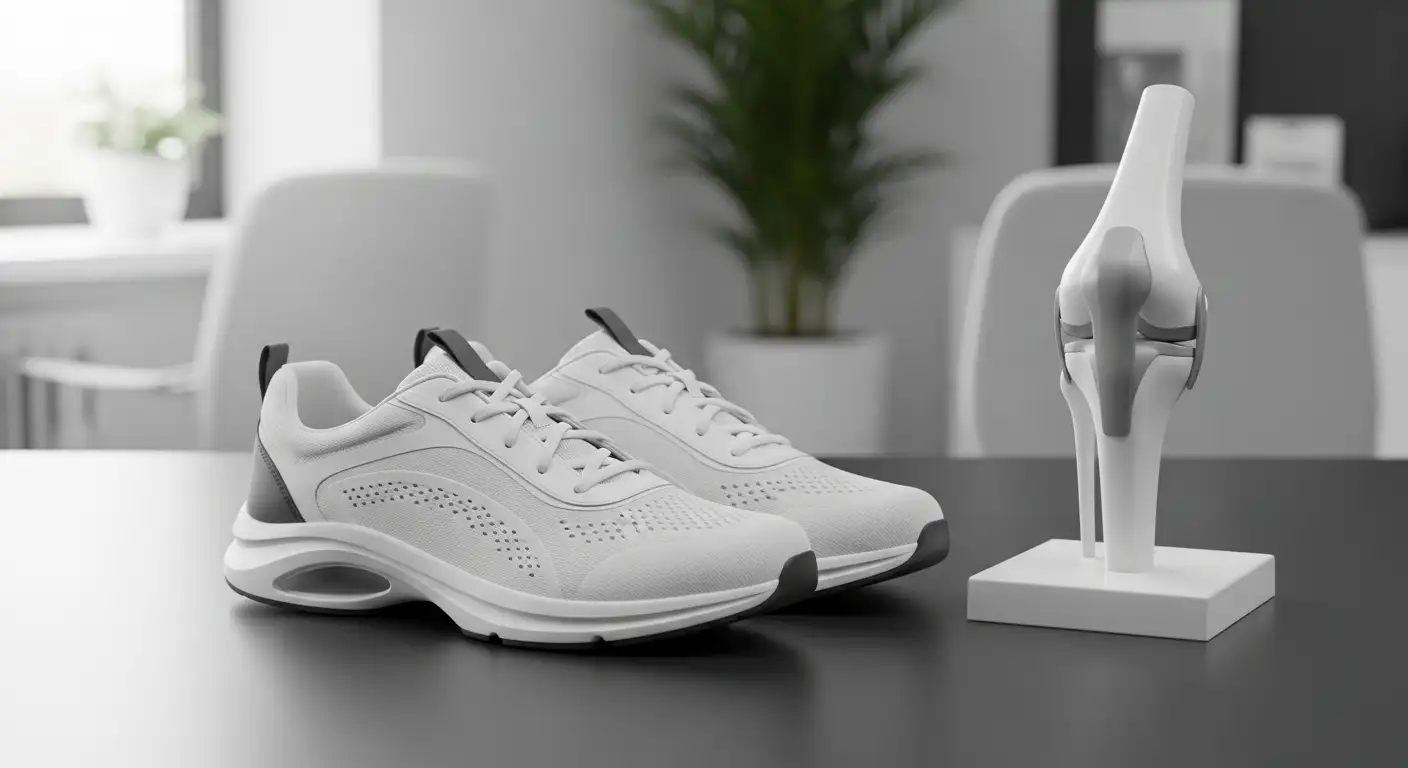
Understanding Plica Syndrome
Plica syndrome is a condition that can lead to knee pain and discomfort. Understanding its causes, mechanisms, symptoms, and methods for diagnosis is essential for effective management and treatment.
Causes and Mechanism
Plica syndrome occurs due to irritation of a small section of tissue known as the plica in the knee joint. This irritation can arise from injury or overuse, causing the plica to become trapped between the femur, kneecap, or the femur and quadriceps tendon during knee movements, particularly when bending at angles between 70 to 90 degrees. Activities such as running, rowing, gymnastics, hockey, and basketball are known to exacerbate this condition [1].
Cause of Plica SyndromeDescriptionOveruseRepetitive knee movements leading to irritationDirect InjuryTrauma affecting the knee jointActivitiesRunning, biking, and team sports increase risk
Additionally, the medial plica, which is a fold in the tissue lining the knee joint, can become inflamed from various activities involving the knee. The irritation may result from twisting injuries or repetitive knee movements [2]. It is important to note that Plica Syndrome is often diagnosed after excluding other potential knee issues, as its overall incidence ranges from 3.8% to 5.5% compared to other knee pathologies.
Symptoms and Diagnosis
Patients with plica syndrome typically experience a range of symptoms that may include:
Symptoms of Plica SyndromeDescriptionKnee PainPersistent discomfort in the knee jointSwellingInflammation around the knee areaLocking or CatchingSensation of the knee catching or locking during movementClicking SoundsAudible clicks during knee motionInstabilityFeeling of the knee giving way
Other symptoms may encompass difficulty climbing stairs and localized tenderness, particularly when pressure is applied to the affected area [2]. Diagnosis is often made by a chiropractor or physiotherapist, especially if treatments for patellofemoral pain do not yield results. It generally relies on the patient’s history, physical examination, and observation of symptoms, as there are no standard tests available for Plica Syndrome. An MRI may be conducted to check for signs of inflammation and fibrosis (Bodimend Powerment), though it is not always required initially.
Clinicians will evaluate the mobility and strength of the lower extremities and may implement movement assessments. While X-rays are not definitive for diagnosing plica syndrome, they may be used to ensure there are no other underlying problems [4]. The condition is most commonly seen in young adults who engage in physically demanding activities.
Treatment Options for Plica Syndrome
Managing Plica Syndrome effectively requires a multi-faceted approach. Various treatment options range from conservative therapies to surgical interventions, as well as physical therapy. Understanding each option can help individuals make informed decisions regarding their recovery.
Conservative Approaches
Conservative treatments are often the first line of defense against Plica Syndrome. These techniques focus on reducing pain and inflammation while allowing the body to heal naturally. Key conservative approaches include:
The effectiveness of these conservative approaches can vary based on individual circumstances, including the severity of the syndrome. Recovery may take weeks to months, depending on adherence to treatment and avoidance of aggravating activities. For additional support, individuals may consider exploring options like sartorius exercises and bone spurs pictures for related conditions.
Surgical Interventions
In cases where conservative treatments do not yield favorable outcomes, surgical intervention may be necessary. Surgical options are usually considered when there is persistent pain or significant functional impairment that hinders daily activities.
Surgical options can offer relief, but patients should also be aware of potential risks and consult with their healthcare provider for a thorough evaluation.
Physical Therapy
Physical therapy plays a crucial role in the rehabilitation process for Plica Syndrome. A tailored rehabilitation program can help strengthen muscles, improve flexibility, and restore function to the knee joint. Typical elements of physical therapy include:
Recovery can be enhanced by incorporating cross-training activities like swimming while focusing on upper body strength training. Rehabilitation often complements exercises aimed at improving knee joint functionality, including options available in the best exercises for quads guide.
Regardless of the treatment route, individuals should be proactive in managing their condition to facilitate healing and regain optimal knee function.
Exercises for Managing Plica Syndrome
Engaging in targeted exercises is crucial for effectively managing plica syndrome. These exercises primarily focus on strengthening the quadriceps and enhancing the flexibility of the hamstrings and gastrocnemius muscles. Additionally, individualized rehabilitation programs are essential for tailoring recovery efforts to an individual's specific needs.
Strengthening the Quadriceps
Strengthening the quadriceps is vital for supporting the knee joint and alleviating symptoms associated with plica syndrome. A study found that 73% of patients treated for medial plica syndrome had a full return to activity with complete pain relief after interventions including strengthening exercises [5]. Here are some effective exercises to consider:
ExerciseDescriptionSetsRepsStraight Leg RaisesLying on your back, keep one leg bent and raise the other leg straight up.310-15Quad SetsSit with legs straight, tighten the thigh muscles and hold for a few seconds.310-15Wall SquatsLean against a wall and slide down into a squat position, keeping knees above ankles.310-15
For more exercises on strengthening the quads, visit best exercises for quads.
Hamstring and Gastrocnemius Flexibility
Increasing flexibility in the hamstrings and gastrocnemius (the calf muscles) is essential for reducing tightness and improving overall knee function. Key exercises involve both stretching and strengthening these muscle groups. Focus on the following stretches:
StretchDescriptionDurationHamstring StretchSit with one leg extended and reach towards the toes, keeping your back straight.15-30 secondsGastrocnemius StretchStand facing a wall, place one foot back, and press the heel down to feel the stretch in the calf.15-30 secondsDynamic Hamstring StretchSwing one leg forward and backward while keeping the opposite leg stationary.10-15 repetitions
Incorporate flexibility training into your routine to alleviate knee discomfort, as highlighted in The Prehab Guys.
Individualized Rehabilitation Programs
Individualized rehabilitation programs are crucial for effectively addressing plica syndrome. These tailored programs should prioritize exercises that improve strength, specifically in the quadriceps, while also enhancing flexibility in the lower extremity. The exercises may vary based on an individual's specific condition and recovery goals [3]. It is recommended to work with a physical therapist or healthcare professional to design a program that fits personal needs.
Creating a structured exercise routine that balances both strengthening and stretching will help in managing symptoms and eventually improving knee functionality. Adjustments can be made during the rehabilitation process based on progress and pain levels, leading to a more effective recovery journey.
Recovery and Prognosis
The recovery process for individuals dealing with plica syndrome varies significantly based on the severity of the condition, the expertise of the healthcare provider, and the individual's adherence to rehabilitation protocols. It plays an essential role in achieving successful outcomes through appropriate treatment strategies.
Timeline for Recovery
Recovery time from plica syndrome typically ranges from weeks to months. Individuals may expedite their recovery by reducing training intensity, cross-training with lower-impact activities like swimming, and focusing on upper body exercises. The following table outlines an estimated recovery timeline based on treatment approaches:
Stage of RecoveryEstimated DurationInitial Rest and Recovery1-2 weeksGradual Return to Activity2-6 weeksFull Activity Resumption6 weeks - 3 months
Post-Surgery Rehabilitation
For those who undergo surgical intervention, a structured rehabilitation program is critical for successful recovery. The first few weeks post-surgery generally involve rest, gentle range-of-motion exercises, and gradually increasing strength training as directed by a healthcare professional. An effective rehabilitation program should include:
Following surgical treatment, it's important to monitor progress and adjust rehabilitation efforts based on the individual's response to therapy.
Favorable Prognosis
The prognosis for plica syndrome is generally favorable after appropriate treatment. Research has shown positive outcomes for individuals diagnosed with this condition. A study of 969 patients revealed that at a median follow-up of 27.5 months, 64% were symptom-free, 26% showed improvement, while only 10% did not respond to treatment.
Patients treated with intraplical steroid injections also demonstrated promising results, with 73% achieving a full return to activity and complete pain relief [5]. Emphasizing patient education regarding the favorable prognosis is essential, as it underscores the importance of adhering to home exercise plans and seeking timely treatment for chronic knee pain to prevent more severe conditions, like grade IV Outerbridge lesions.
In summary, with proper management, recovery from plica syndrome can lead to significant improvements in knee function and a return to normal activities, reinforcing the value of plica syndrome exercises in rehabilitation.
Prevention Strategies for Plica Syndrome
To help individuals reduce the risk of developing plica syndrome, it is important to focus on specific prevention strategies. These strategies include enhancing lower extremity mobility, building muscular strength, and considering appropriate exercise routines.
Lower Extremity Mobility
Adequate mobility in the lower extremities is crucial for preventing plica syndrome. Poor mobility can lead to abnormal movements and increased strain on the knee joint, making it more susceptible to injury. Incorporating regular stretching and mobility exercises can improve flexibility and joint function.
Recommended mobility exercises include:
Exercise TypeExamplesStretchingHamstring stretches, quadriceps stretches, calf stretchesDynamic MovementsLeg swings, hip circles, lunges
Individuals should prioritize stretching the key muscles surrounding the knee, as this will aid in maintaining flexibility and reducing stiffness, thus lowering the risk of injury.
Muscular Strength
Developing muscular strength is essential for providing stability to the knee joint. Strengthening the surrounding muscles creates a supportive framework, helping to absorb shocks and reducing the overall stress on the knee.
Key muscle groups to focus on include:
Muscle GroupRecommended ExercisesQuadricepsSquats, leg presses, best exercises for quadsHamstringsDeadlifts, hamstring curlsCalvesCalf raises, toe walking
Strengthening these muscles can help alleviate undue pressure on the knee, potentially preventing the onset of plica syndrome. Conservative treatment options such as lower extremity stretching and knee extension exercises have been noted to facilitate strength building.
Exercise Routine Considerations
When planning an exercise routine, individuals should be mindful of how certain activities might affect their knees. Gradually increasing the intensity and volume of exercises can prevent overuse injuries and allow the body to adapt to new challenges.
Furthermore, avoiding high-impact activities that stress the knee joint, especially when returning from a period of inactivity, is advisable. Prematurely resuming these activities can lead to persistent pain and aggravate underlying conditions [6]. Attention should also be given to proper technique during exercises to prevent joint strain.
By focusing on these preventive strategies—enhancing lower extremity mobility, strengthening key muscles, and carefully considering exercise routines—individuals can significantly reduce their risk of developing plica syndrome, maintaining healthy and functional knees for daily activities and exercise.
References
[2]:
[3]:
[4]:
[5]:
[6]:





